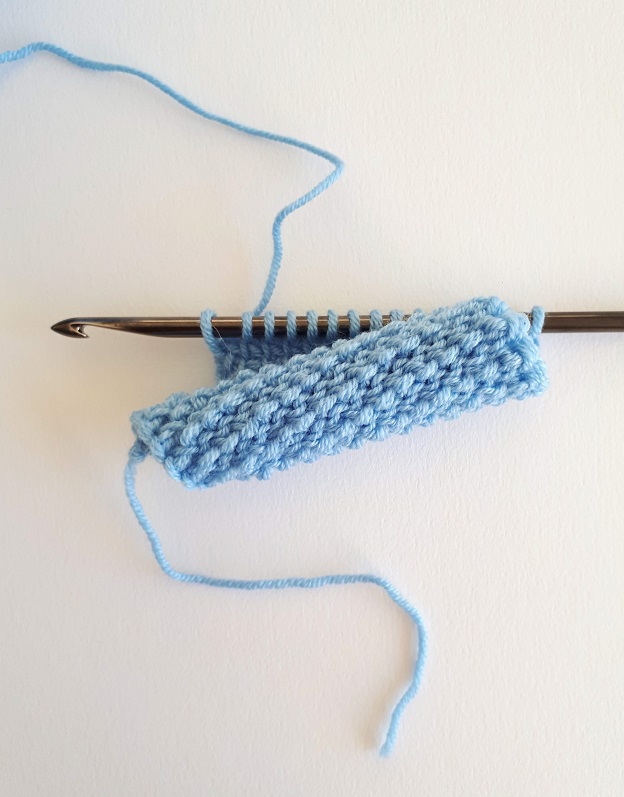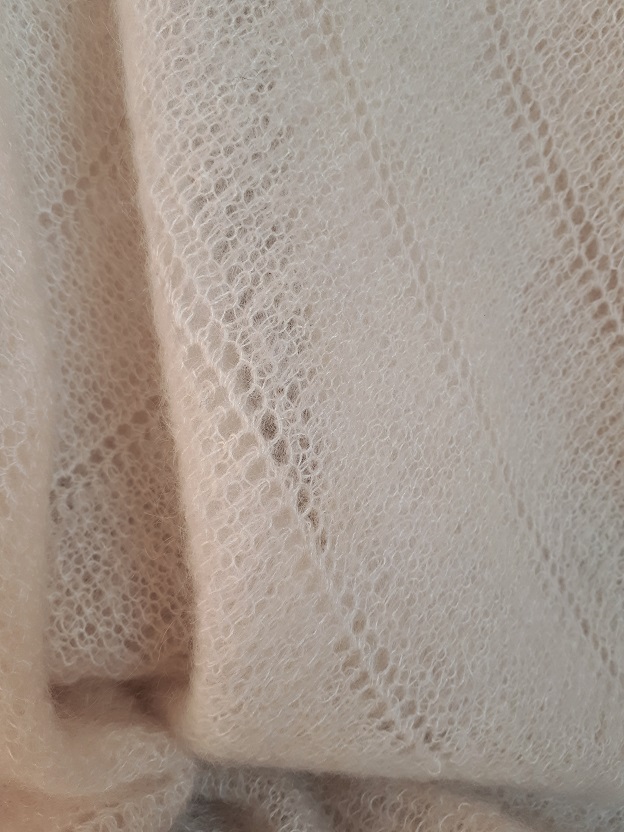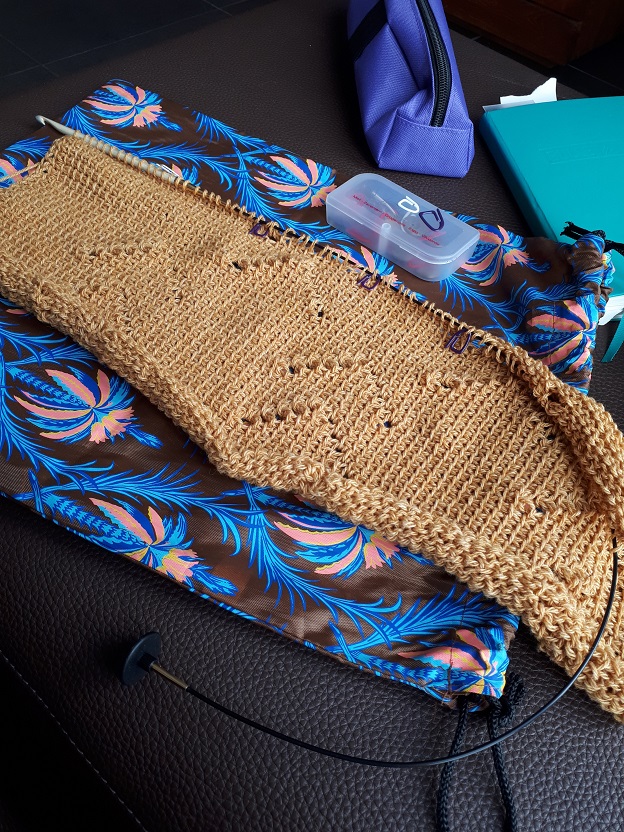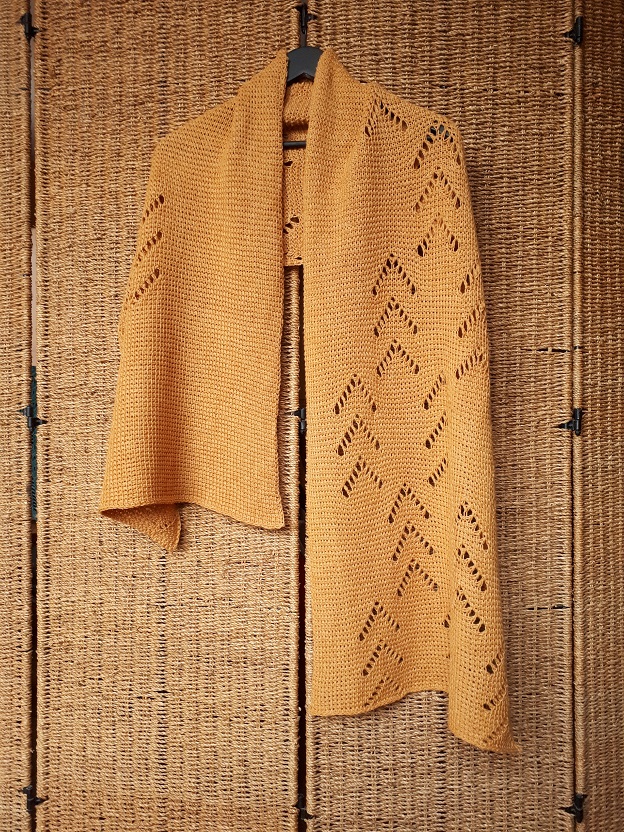A Tunisian crochet work will always tend to curl. And curling can be severe if the fabric is dense. It’s a pure mechanical thing with weight and tension not evenly spread over the crochet work. Curling occurs when there is more fabric on one side of the work (usually but not always the back side of work).

The good news is there are a few things that can be done to fight against curling. You should take several aspects of your work into consideration and, ideally, combine several techniques to minimize curling.
Hook size
Take a bigger hook than whatever is mentioned on the yarn label. I would say one or two sizes up. But actually the best is to make a sample with a bigger hook and see from there what you get. We all crochet with a different tension, we hold our hook and work differently. So there is no such thing as one hook size for one specific yarn that will be ideal for everyone. What is more, you may want to get a fabric that is dense or light, depending on the project you plan to make.
The bigger the hook, the longer the loops you pick up on the forward pass. Therefore the space allocated to the return pass chains is bigger. These chains are not trapped and strangled in tiny forward pass loops.
If you select a extremely big hook, you’ll get not curling at all. But… your fabric will look like a fishnet. Is it what you want to get? Not always.
So you need to find the hook that will give you the ideal fabric. If you still opt for something rather dense (not very fluid), you may opt for a bigger hook only for the first few rows. They will counteract with the curling effect on the following rows.
Yarn type
Yarn types have their own properties and they will not all behave the same way about curling. Some yarns are “natural friends” of Tunisian crochet. I often mention a fluffy blend of mohair and silk as an example. It’s a very thin yarn. Yet it’s fluffy, so with a big hook you don’t get that fishnet effect. It’s light and airy, yet soft and warm.
Give it a try. You’ll make fast progress and there will be very little curling (if any at all). On the photo below, the mohair and silk yarn I used is classified as lace, yet I used a hook size 5,5 mm to make Tunisian simple stitches. Warning: this type of yarn does not forgive any mistake. If you have to undo part of your work, you’ll have a tough time ripping it. Not saying it’s impossible. Just saying “aouch….”.

Different stitches, different results
Compare to other stitches, the Tunisian simple stitch has more fabric at the back.
On the forward pass, yarn remains at the back of work and forms some kind of mini loops in between loops that you pick up on your hook.
And the return pass chains made of 3 threads will be pushed to the back each time you start a new forward pass.
Modified stitches help fighting a little against curling in the sense that their base is trapped within the return pass chain. This holds a little the return pass chain to the front.
Purl stitches help as well. You bring yarn to the front of your work, which adds fabric to the front and creates some kind of counterbalance with the fabric at the back.
Extended stitches fight against curling in another way. These are “high” stitches, with distinct “layers”. And the lower layer has usually less weight (and less yarn) than the top layer in which the return pass chains are worked. Again the weight of yarn is spread differently with an impact on curling.
Foundation rows
If you start with a foundation row made of chains, you can pull up loops from the back thread of the chains. It helps. Very little. But it helps.
You can opt for another type of foundation row (made of single crochet, double crochet stitches….). They defeat curling better than chains. Unfortunately, they are not always interchangeable with chains. It depends on the project or design.
Blocking
I’m not going to give many details about blocking techniques here. It all depends on the type of fiber you use and the project you make.
Cables and pins are essential for lacework and projects with very specific shapes (like dragon tails and the likes). But I hardly ever use them for blocking projects with simple shapes or seamless top down sweaters, for example. I just soak the item in water, I press the excess of water out and then I lay the thing on a towel making sure it has the shape I want it to have. If curling is not serious, this is just enough to defeat completely.


Specific shapes or forms
The shape of a design may be prone to curling. Typically a very wide triangle with 2 very thin pointy sides will curl where fabric is narrow. Actually it is not really curling, it twists and takes the shape of a screw. In general, any very thin band will be difficult to keep flat all the time.

The picture with the Ivory mohair….. Do you have a pattern you’d share with me? It’s beautiful!!
Hi, Sara,
It’s my pattern Une autre manière de faire (Another way of doing it) available in French and in English on Ravelry.